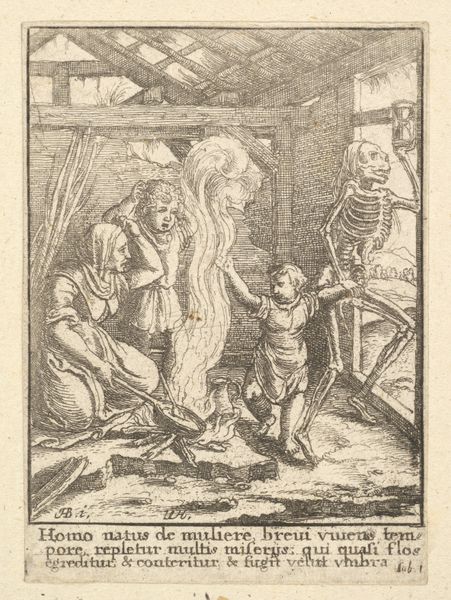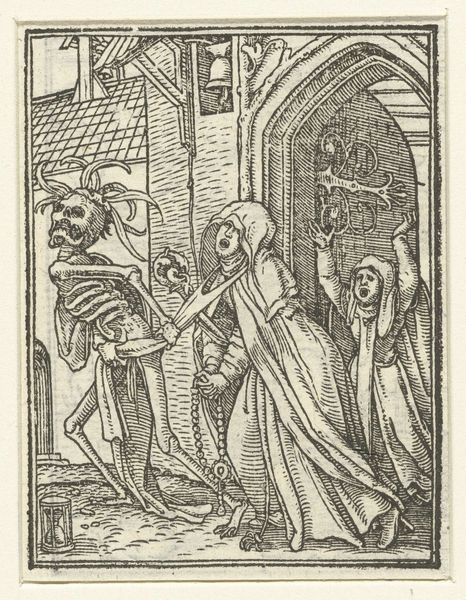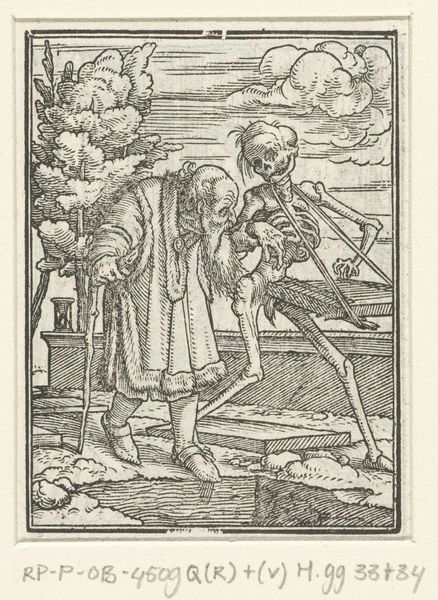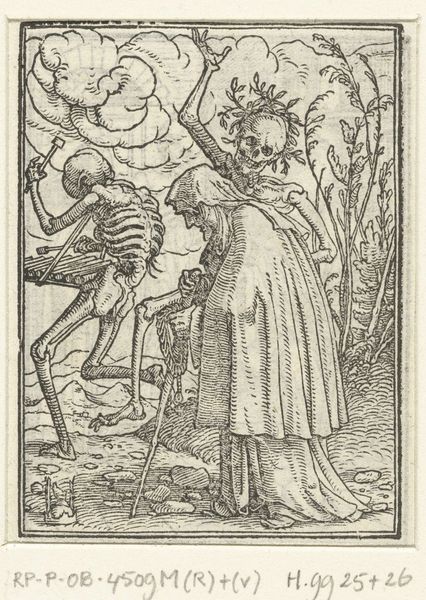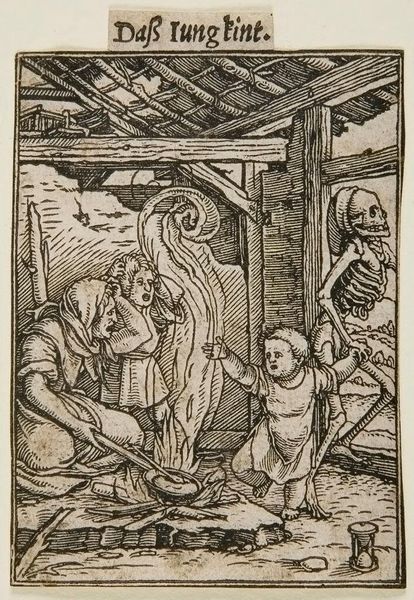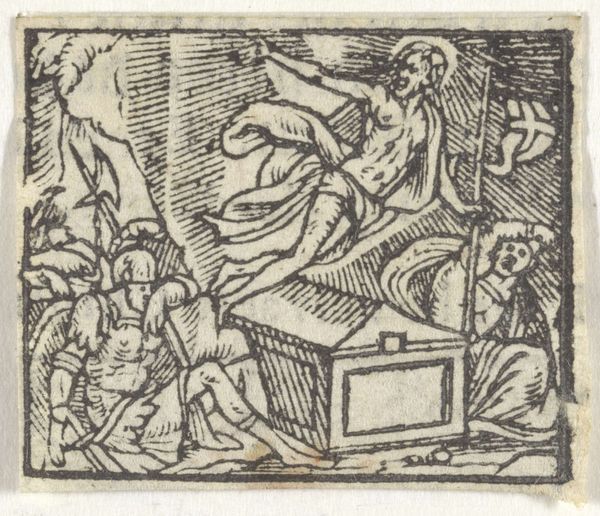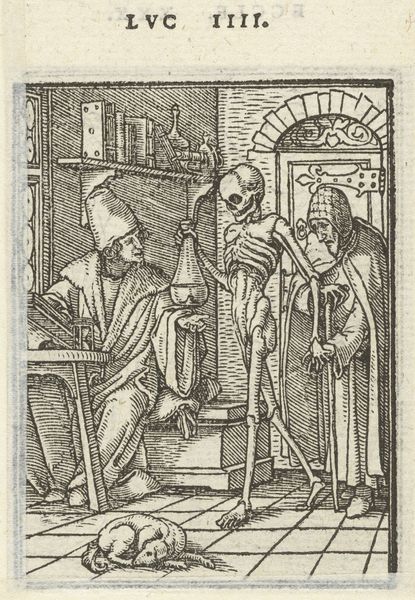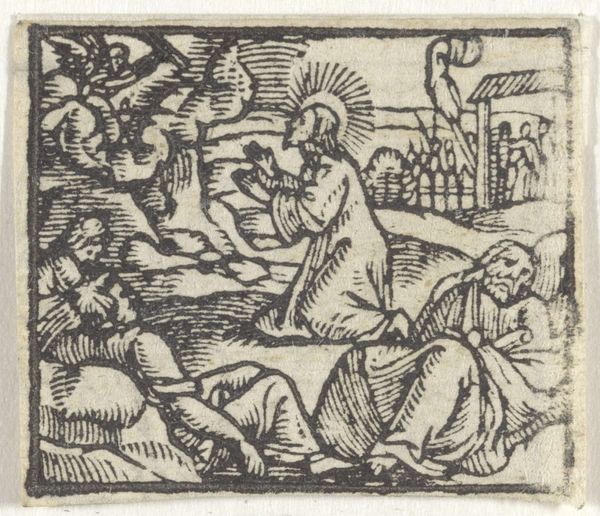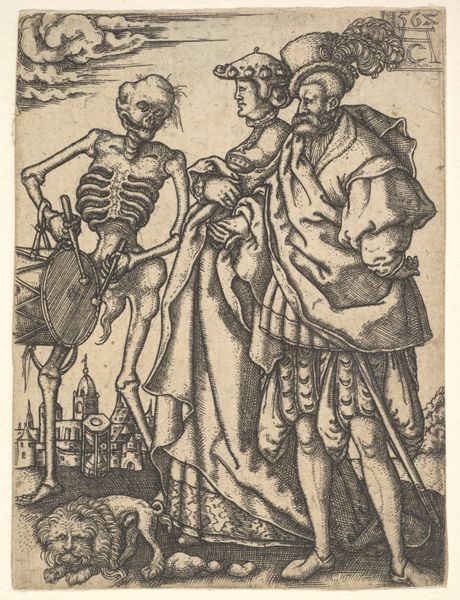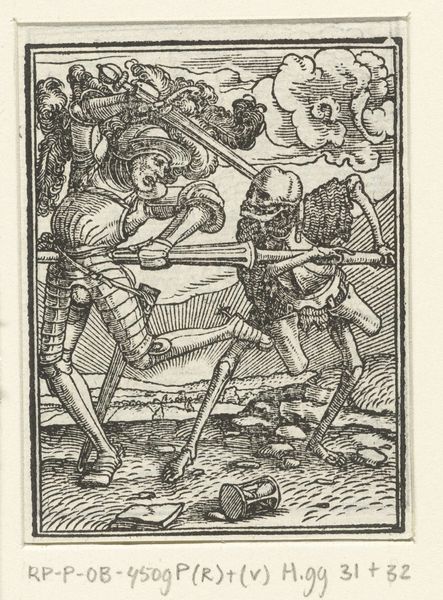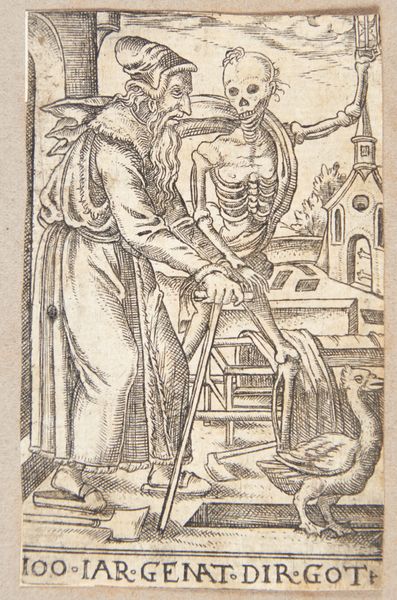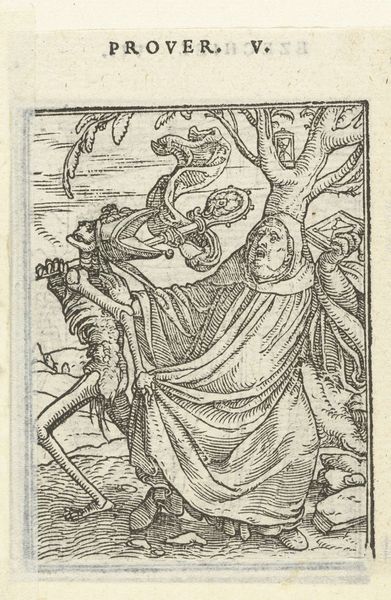
woodcut, engraving
#
allegory
#
narrative-art
#
pen illustration
#
death
#
old engraving style
#
woodcut
#
history-painting
#
northern-renaissance
#
engraving
Dimensions: height 65 mm, width 50 mm
Copyright: Rijks Museum: Open Domain
Hans Holbein the Younger created this woodcut, "Kind en de Dood" or “Child and Death”, sometime between 1526 and 1543. Holbein was working in a Europe ravaged by disease, religious conflict, and stark class divisions, all of which profoundly shaped his artistic vision. Here, we see a domestic scene interrupted by the skeletal figure of Death, who invades the space of the living. The image presents a powerful commentary on mortality, particularly the vulnerability of childhood. Look at the terrified reactions of the mother and child contrasted with the innocent curiosity of the toddler reaching out to death. It speaks to the era’s high infant mortality rates and the ever-present threat of death in daily life. The artwork doesn't shy away from depicting the raw emotions and experiences tied to loss. It asks us to confront uncomfortable truths about our own existence and mortality. It acts as a stark reminder of the preciousness and fragility of life.
Comments
No comments
Be the first to comment and join the conversation on the ultimate creative platform.
